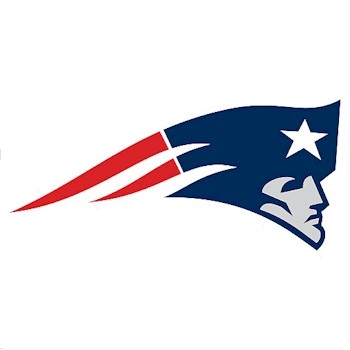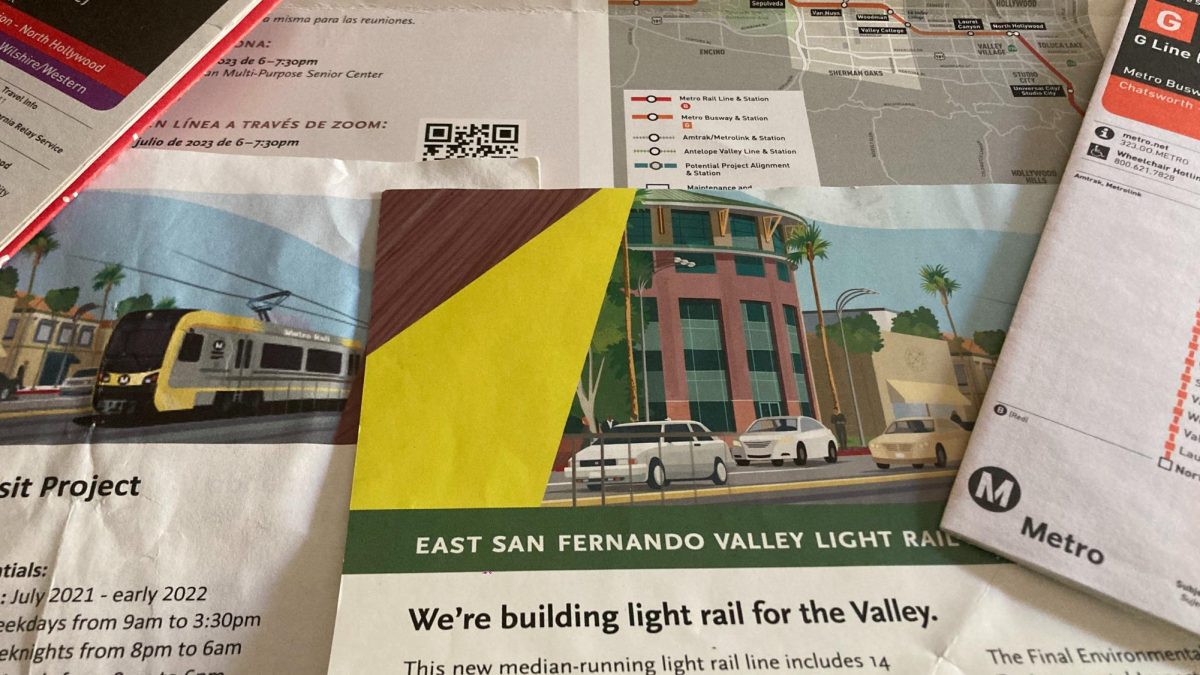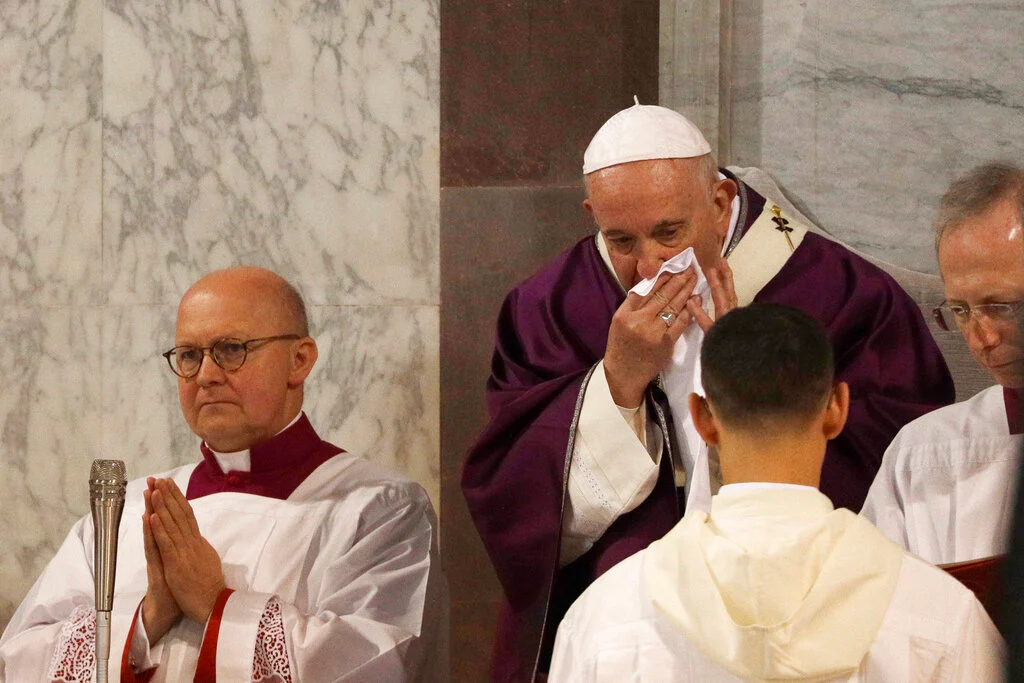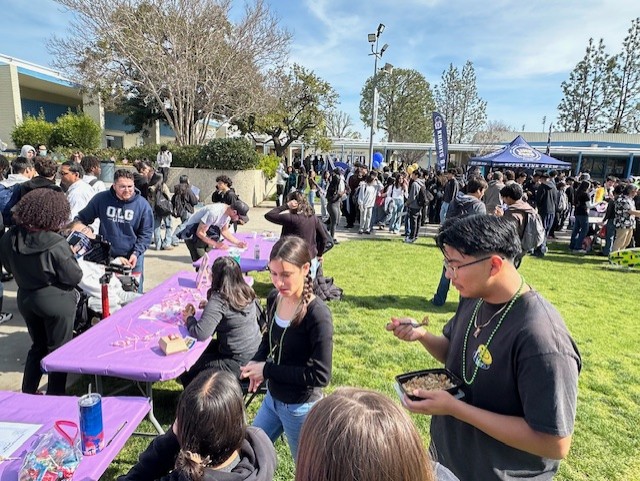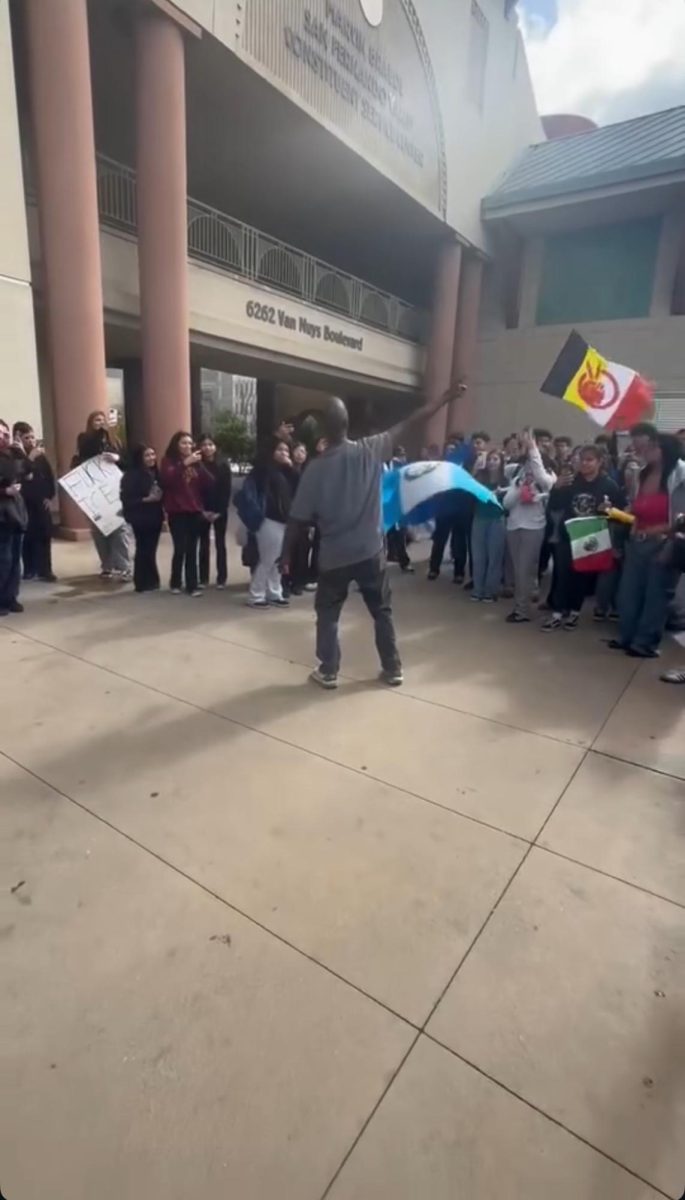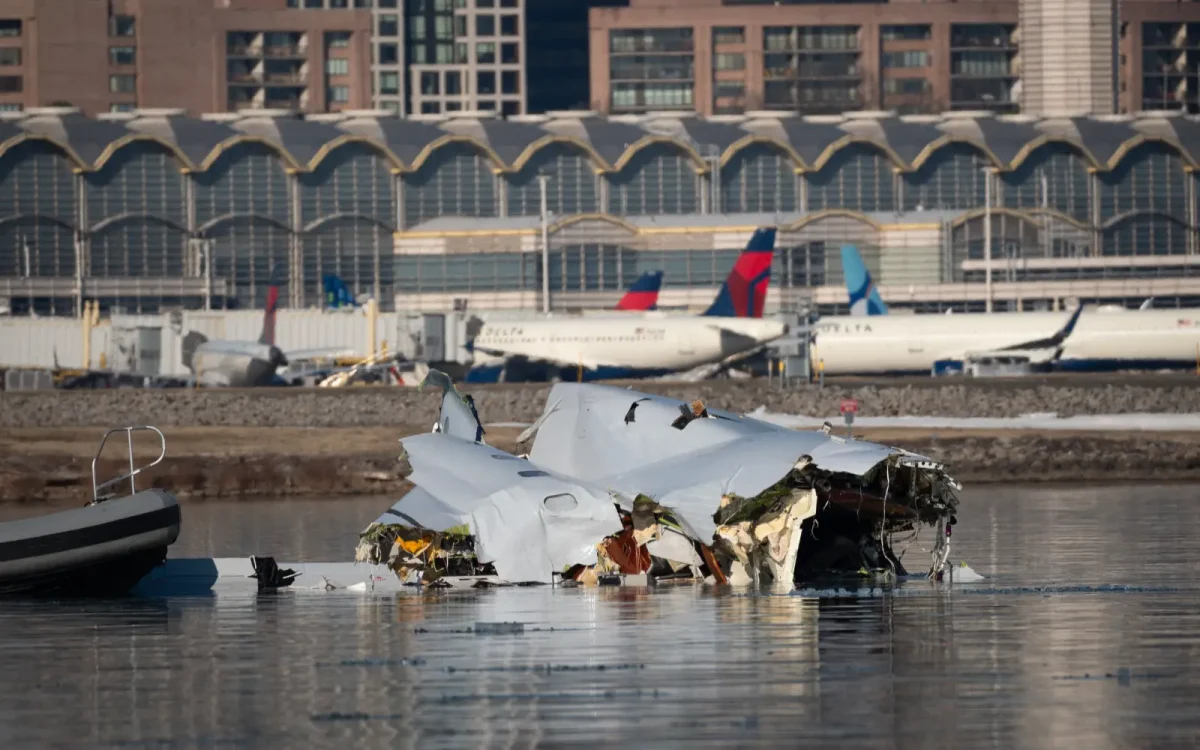During the early 1900s, transit in Los Angeles reached its peak in the late 1910s. Pacific Electric, now a defunct transit company, operated 143 lines that spanned most of Los Angeles County, the Inland Empire, San Bernardino, and Riverside Counties. All these lines either terminated or connected to trains running toward downtown L.A.
During the 1910s and 1920s, three different ” streetcars served the San Fernando Valley.” These lines were interconnected and ran to various parts of Los Angeles. The three streetcar lines that once operated in the Valley were the Owensmouth Line, the Glendale-Burbank Line, and the San Fernando Line.
The Owensmouth route was the original Red (B) and Orange (G) lines, which ran through downtown L.A., passing through the Cahuenga Pass where the 101 freeway exists today. From there, the route continued through North Hollywood to Chandler Blvd., passing through Van Nuys. It then headed north before turning west on Sherman Way, ultimately reaching Canoga Park, which was formerly called “Owensmouth.”
The Glendale-Burbank Line also started in downtown L.A., heading north along Brand Blvd. in Glendale. It then turned toward Burbank along San Fernando Road, ending near what is now the Burbank Metrolink Station.
Story continues below advertisement
The San Fernando Line followed a similar path to the Owensmouth route. However, instead of turning west on Sherman Way, it continued north along Van Nuys Blvd. It then veered west on what is now Parthenia Street before heading north again on Sepulveda Blvd., eventually reaching San Fernando.
These routes once provided great ridership to and from the San Fernando Valley, but significant changes were on the horizon. Between the 1920s and 1950s, Los Angeles began transitioning into a car-centered city. Major highways were constructed over existing tracks, and roads were expanded to accommodate more vehicles. This shift, aimed at building a car-dependent infrastructure, would later pose significant challenges for the city.
In 1938, the San Fernando Line and part of the Owensmouth Line were shut down, limiting the streetcar’s reach to Van Nuys Blvd. and Sherman Way. By 1952, the remaining portion of the Owensmouth Line was closed, followed by the Glendale-Burbank Line in 1955. After the Pacific Electric system was completely shut down, many of the tracks were abandoned or destroyed, marking the end of an era for L.A.’s streetcar system.
For 27 years, the Valley did not see any other transit systems out of Los Angeles except for two trains that did not run daily or hourly. One of them was Santa Fe’s “San Diegan.” Then in 1971, Amtrak’s “Coast Starlight” appeared and operated from Downtown L.A. to Seattle in Washington. In 1982, CalTrans would run a Commuter Server through the Valley on today’s “Ventura County Line” that Metrolink operates, but we will come back to them later. CalTrans service ran from Union Station in downtown L.A. to Oxnard in Ventura County which would be named (CalTrain L.A.). Later on, however, due to a storm damaging a trestle in the route, the service was suspended in 1983 after six months of service. In 1992, this would all turn back around with a new commuter rail company called Metrolink. It would bring two new train lines that would run daily and during the rush hours of the day. The Ventura County Line and the Santa Clarita Line (now Antelope Valley Line) have been operating service to many commuters since October 23rd and 26th of 1992, respectively.
The Ventura County Line opened on October 26, 1992, and operates on the same tracks once used by the failed CalTrans route. It runs alongside the Antelope Valley Line from Downtown LA to Burbank before splitting off and heading toward Van Nuys, Northridge, and Chatsworth in the San Fernando Valley. The line ends either in Simi Valley or Ventura and serves six stations in the San Fernando Valley.
The Antelope Valley Line opened three days later, on October 29, 1992. It runs through the eastern side of the San Fernando Valley, sharing the same route with the Ventura County Line from downtown L.A. to Burbank before splitting off toward Sun Valley and San Fernando. From there, it continues to Santa Clarita, Newhall, Palmdale, and finally Lancaster. The Antelope Valley Line serves five stations in the San Fernando Valley.
In 2000, L.A. Metro’s heavy rail Red (B) Line reached the San Fernando Valley as part of its phase three expansion. The subway runs underground, passing through Universal City and ending in North Hollywood. As L.A.’s first subway, it has been a major success, efficiently traveling underneath the mountains without needing to slow down. The trip from Hollywood Blvd. to Lankershim Blvd. takes just five minutes. This line has become highly beneficial for the Valley, providing the fastest connection to the greater Los Angeles area, with trains running every 7-20 minutes, depending on the time of day.
In the same year in 2000, Amtrak also put their new service that runs like Metrolink but has limited stops or skips over other stations. This service that runs mainly on the Ventura County Line tracks is called the “Pacific Surfliner.” It runs from San Diego to Los Angeles, then to either Santa Barbara or San Luis Obispo. This service along with the Ventura Country Line runs every week, but mainly during rush hours or different parts of the day. However, the Pacific Surfliner runs all days of the week, while Metrolink’s Ventura County Line does not.
In the early 2000s, L.A. Metro began to experiment with new line extensions as part of a project to convert abandoned train tracks into a private busway for its first Bus Rapid Transit (BRT) system. This initiative culminated in 2005 with the introduction of the Orange (G) Line, a busway specifically designed for buses rather than trains. The service extended from North Hollywood station, where the Red (B) Line ends, toward Warner Center in Canoga Park. The Orange Line utilized the abandoned Burbank Branch Line, which had been closed since 1991 and was purchased by Metro from Southern Pacific.
The Orange Line quickly gained popularity, serving the densely populated areas of the San Fernando Valley. In 2012, the G Line completed its second phase, extending northward toward Chatsworth while still using the abandoned tracks Metro had acquired. By 2016, the G Line had ended its service to Warner Center, focusing solely on the main busway toward Chatsworth.
At this point, we have two Metro lines: a BRT that runs from North Hollywood to Chatsworth, connecting with both the B Line and the Ventura County Line at each end, and a heavy rail/subway line that connects North Hollywood with the G Line and Union Station in downtown L.A., linking to various other transit buses and commuter trains. Additionally, three commuter train lines are operating through the Valley, primarily the Ventura County Line and the Pacific Surfliner, along with the Antelope Valley Line serving the eastern side of the San Fernando Valley. Overall, these five lines provide comprehensive connectivity in the Valley, enabling commuters to travel to downtown L.A. or reach other areas in Los Angeles from the north, south, west, and east.
Although there are currently five lines running through or into the San Fernando Valley, L.A. Metro is planning to add three new lines. One of these lines will restore the old Pacific Electric route that previously ran to San Fernando. Another line will operate in a BRT style, providing service to Pasadena. The third line aims to alleviate congestion and reduce the need to take the 405 freeway over the mountains toward Westwood.
Metro plans to upgrade nearly every line in its system that connects to or operates within the Valley. Additionally, Metrolink has plans to improve its services by adding new trains and stations, as well as increasing the frequency of train operations.
While these projects were initially slated for completion by the 2028 Olympics, complications and delays have affected the timeline. As a result, only one of these new lines is expected to be fully completed before the Olympics.
Here’s all of them listed:
The East San Fernando Valley Rail Line will take inspiration from its predecessor, the Owensmouth/San Fernando streetcar. This new line will be a light rail system running above ground in the middle of Van Nuys Blvd. Currently, details on how the line will navigate obstacles remain unclear. However, it is confirmed that the line will open in two phases.
Phase One will extend along Van Nuys Blvd, starting at the Van Nuys Orange Line station and ending at the intersection of San Fernando and Van Nuys. The design of this line is similar to the Expo (E) Line or the new Crenshaw (K) Line, operating on the street but having to stop for traffic lights. This characteristic may present a disadvantage, as it could lead to delays at intersections.
The stops for Phase One will include:
- Van Nuys G Line Station
- Victory
- Vanowen
- Sherman Way
- Van Nuys Metrolink Station
- Roscoe
- Nordhoff
- Woodman
- Arleta
- Laurel Canyon
- Van Nuys/San Fernando
Construction of this line was originally scheduled to begin years ago. However, public complaints and complications due to COVID-19 caused significant delays. Construction is now expected to start at the end of 2024 or in March 2026, with a projected completion date of 2031, meaning it will miss the 2028 Olympics.
Phase Two plans to extend the line north along the Metrolink Antelope Valley Line, ending at the Sylmar Metrolink Station in San Fernando. This phase will include three new stations: Paxton, Maclay, and Sylmar/San Fernando, connecting to the existing Antelope Valley Line station for more frequent service.
Additionally, there is a plan for an infill station at Van Nuys/San Fernando to enhance connectivity with the Metrolink station. While a specific timeline for the construction of Phase Two has not yet been established, its completion is estimated for 2033.
Sepulveda Pass Line: The highly controversial rail line that has seen some backlash against people who won’t even take the line. But that’s another story. The line was thought of in 1980 by Metro that would have a train line either run underground or on the median of the 405 freeway that runs from Sherman Oaks to Westwood. It takes people off the 405 driving into L.A. and gets them away from the dreadful traffic that can last hours. It would also open in two phases, with the second being scheduled to be built in 2048. This line has six various alternative routes of how the route would run, where, what train, or where it would generally stop. Two Rail alternatives would be either the rail line a monorail train that runs on its bridge above ground or it would be a heavy rail line just like the Red (B) line and the Purple (D) Line. Here are the alternatives:
Alt 1: Alternative 1 which is a monorail that starts in the Valley in the Van Nuys Metrolink Station. It runs towards Sepulveda and turns south on the 405, traveling then on the right-hand side of the freeway with eight stations connecting to the VA Hospital Purple line station near UCLA, but not close enough to the campus. Then it will connect to it and end it near a station near the Expo/Sepulveda Station on the Expo (E) Line.
Alt 2: Alternative 2 which is a monorail rail line that also runs the same route as Alternative 1. However, the portion of the line near UCLA turns and is much closer to the future purple (D) Line station of Westwood along with another monorail train. It will run towards the campus of UCLA to connect people from the campus to the train.
Alt 3: Alternative 3, which is a monorail rail line, runs the northern side similarly to Alts 1 and 2. When it gets close to the Getty Center the monorail goes underground and diverts from the 405 going under Bel Air and travels under UCLA. It also makes a station at the campus, later going back near the same spot where Alt 2 is in its Westwood station before going above ground again and running along the 405 once again and ending up in the same place above ground.
Alt 4: Alternative 4 differs from the other options as it is a heavy rail/subway line. It starts at the Van Nuys Metrolink station and runs west towards Sepulveda. Unlike other lines that turn south on the 405, this one turns south on Sepulveda and connects to the Orange Line Sepulveda station. The line then runs above ground to Sherman Oaks before reaching the mountains. Once it passes Sherman Oaks, the line will go underground, continuing in a nearly straight path to UCLA without needing to turn. After UCLA, it remains underground, reconnecting with Sepulveda Blvd and linking to the future Purple Line station. The line ends near the Sepulveda Expo Line station.
Alt 5: Alternative 5 is very similar to Alternative 4, as it is also a heavy rail line. The key difference is that, except for the Van Nuys Metrolink station, the portion in the valley is above ground. Once the line reaches Sepulveda, it runs entirely underground, making the entire train a complete subway system.
Although a monorail may sound like a cool idea, it isn’t practical from a technical standpoint for several reasons. The connectivity of monorail systems isn’t great for any of the alternatives, as many stations are located far from main streets that connect to other buses and businesses. The walk to these stations, often divided by freeways, can take 4-8 minutes, which discourages riders from using the line.
Additionally, the speed of monorails is slower than heavy rail alternatives because they need to make constant turns to follow the curves of the 405 freeway. Another issue is that monorails are small in size, limiting the number of passengers per trip. With fewer connections and longer walking distances, ridership on monorail lines is unlikely to be high. On the other hand, the heavy rail options provide better possibilities. Their stations are not located near freeways and are immediately connected to major streets or significant spots, such as the UCLA station, which is directly above the train line. Heavy rail trains are also wider, allowing more passengers to fit. Since these trains run underground and do not need to stop while crossing the mountains, they can maintain speeds of 70-79 mph for extended periods. Studies show that Alternatives 4, 5, and 6 are preferred due to public demand for heavy rail, which offers faster travel times. The entire trip using heavy rails can take 19-22 minutes, compared to 25-30 minutes on a monorail for the same journey from the San Fernando Valley. While many details about this specific corridor are still being discussed, it is expected that Metro will likely choose Alternatives 4 and 5, with a projected completion date around 2031.
All these rail lines were meant initially to be completed by the 2028 Olympics. However, as you can tell from the reading, it won’t be the case for these lines. Only one of them is expected to be completed by the 2028 Olympics. This line, although not a rail line, is a new BRT (Bus Rapid Transit) similar to the Orange Line.
The NoHo Pasadena Corridor. This line will differ from the Orange Line in that it won’t use its private busway along the entire route. Although it will utilize long 60-foot buses, the route will pass through Burbank, Glendale, and Eagle Rock, and end in Pasadena. This bus route will feature its lanes on the 134 freeway, though not for the entire freeway, as well as dedicated bus lanes with signal priority. While not as advanced as the rail lines, this bus line will be a quick and efficient route from getting from Pasadena to North Hollywood. It’s estimated to open in early 2028, before the Olympics.
While the Valley is getting three new routes—one in 2028 and the others around the early 2030s—there are other planned additions as well. The Orange Line, which runs from North Hollywood to Chatsworth, is set to have grade-separated stops between 2027 and 2030. This means that instead of stopping at street-level stations, the line will feature bridges, allowing it to stop above the street, which will make the route faster. Additionally, Santa Barbara County has been researching an extension of the Ventura County Line. This extension would run from Ventura to Goleta, passing through Santa Barbara, but it’s still uncertain whether this plan will go through. The Antelope Valley Line is also being considered for an extension beyond Lancaster to reach nearby cities in Kern County. Both the Ventura County and Antelope Valley Metrolink lines are planning to improve scheduling to offer better return trips throughout the day. New schedules are expected to come out in October 2024.
